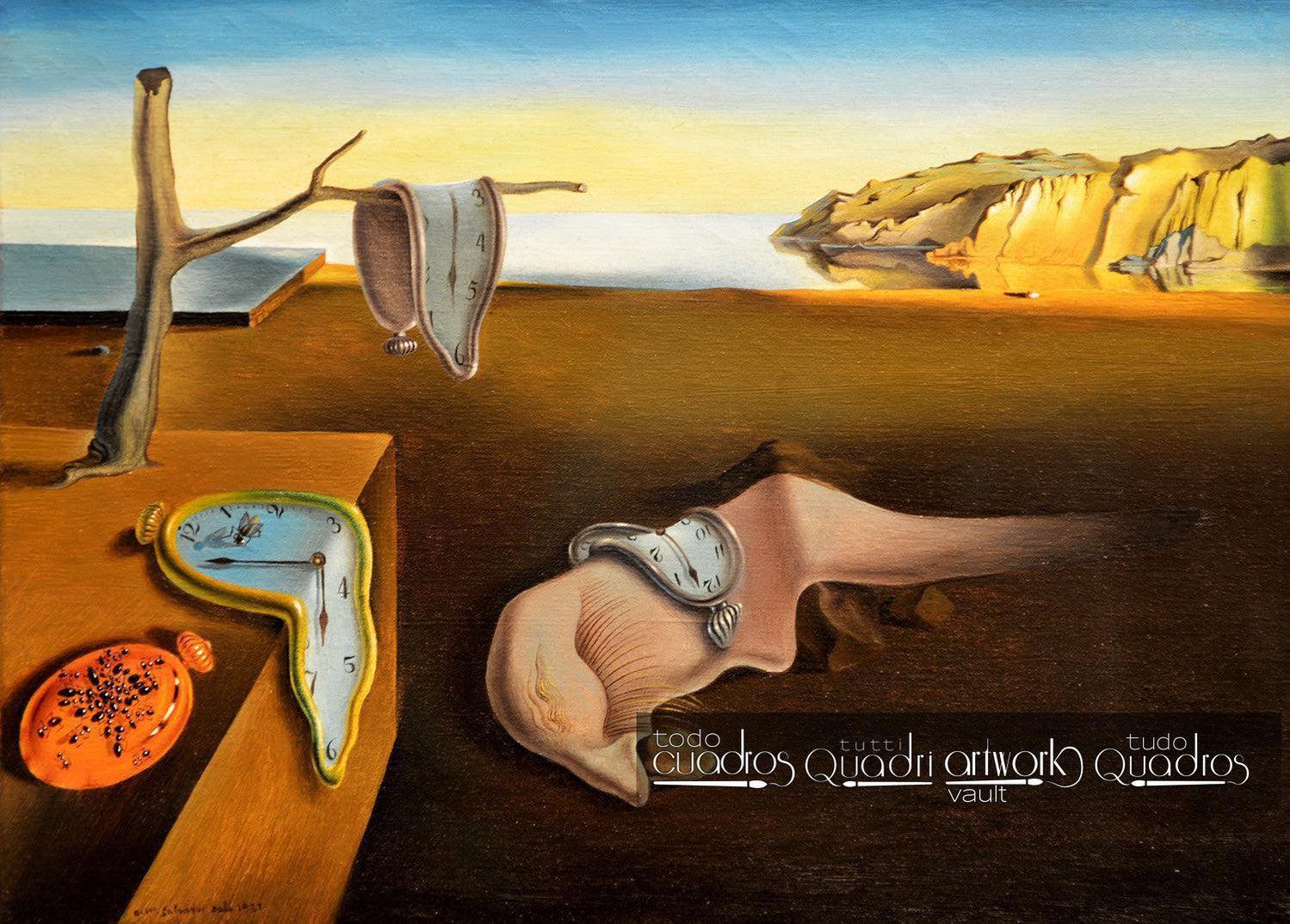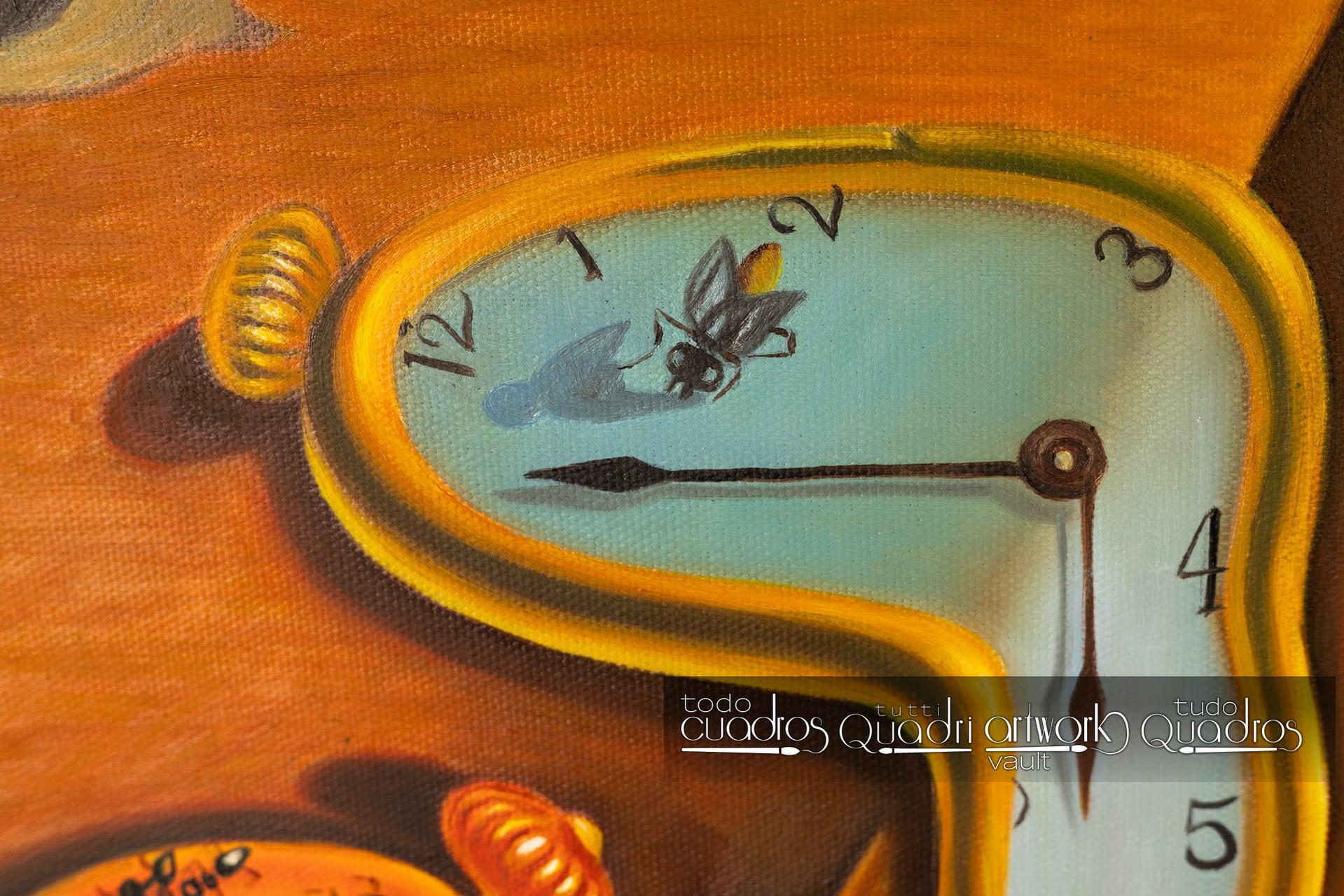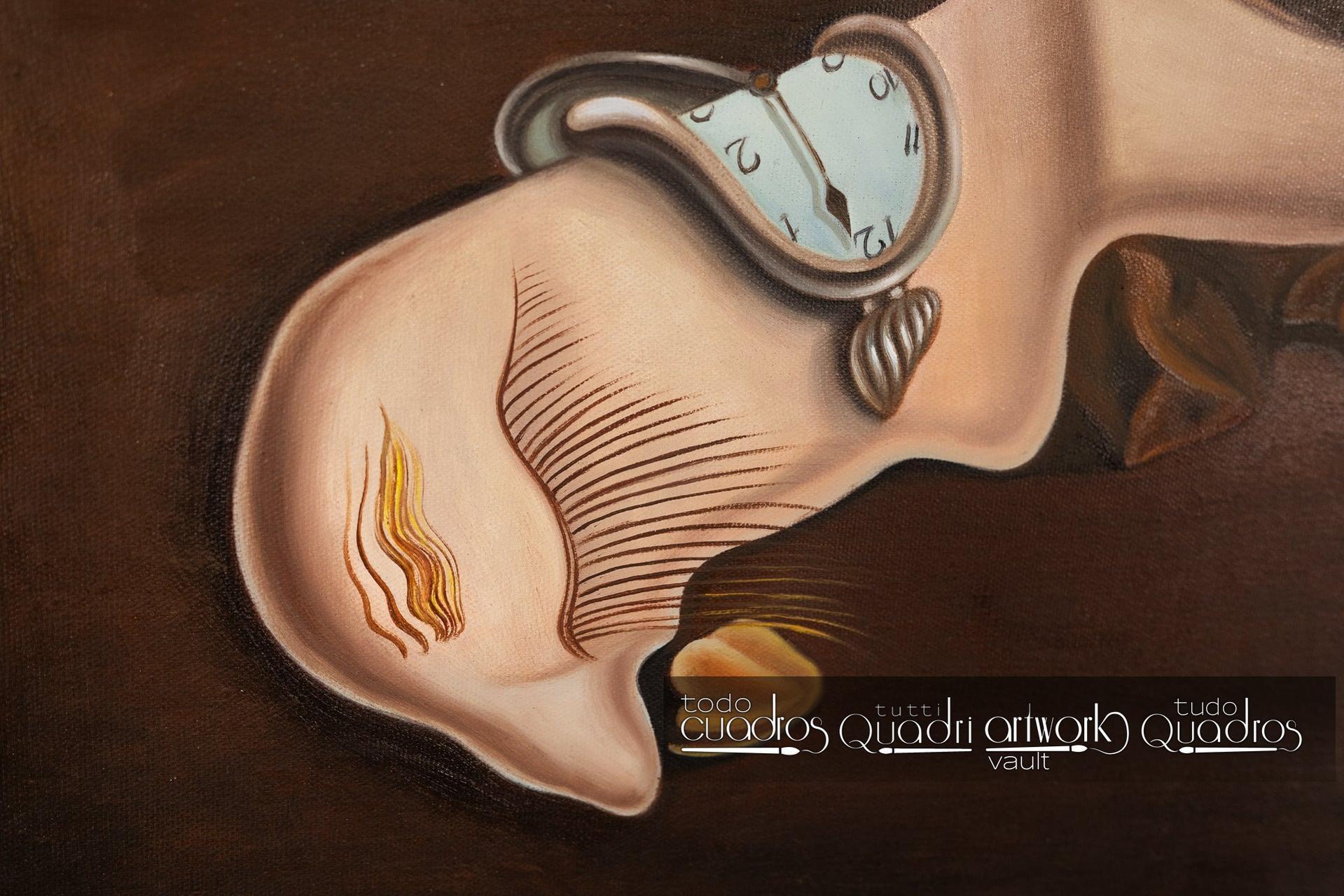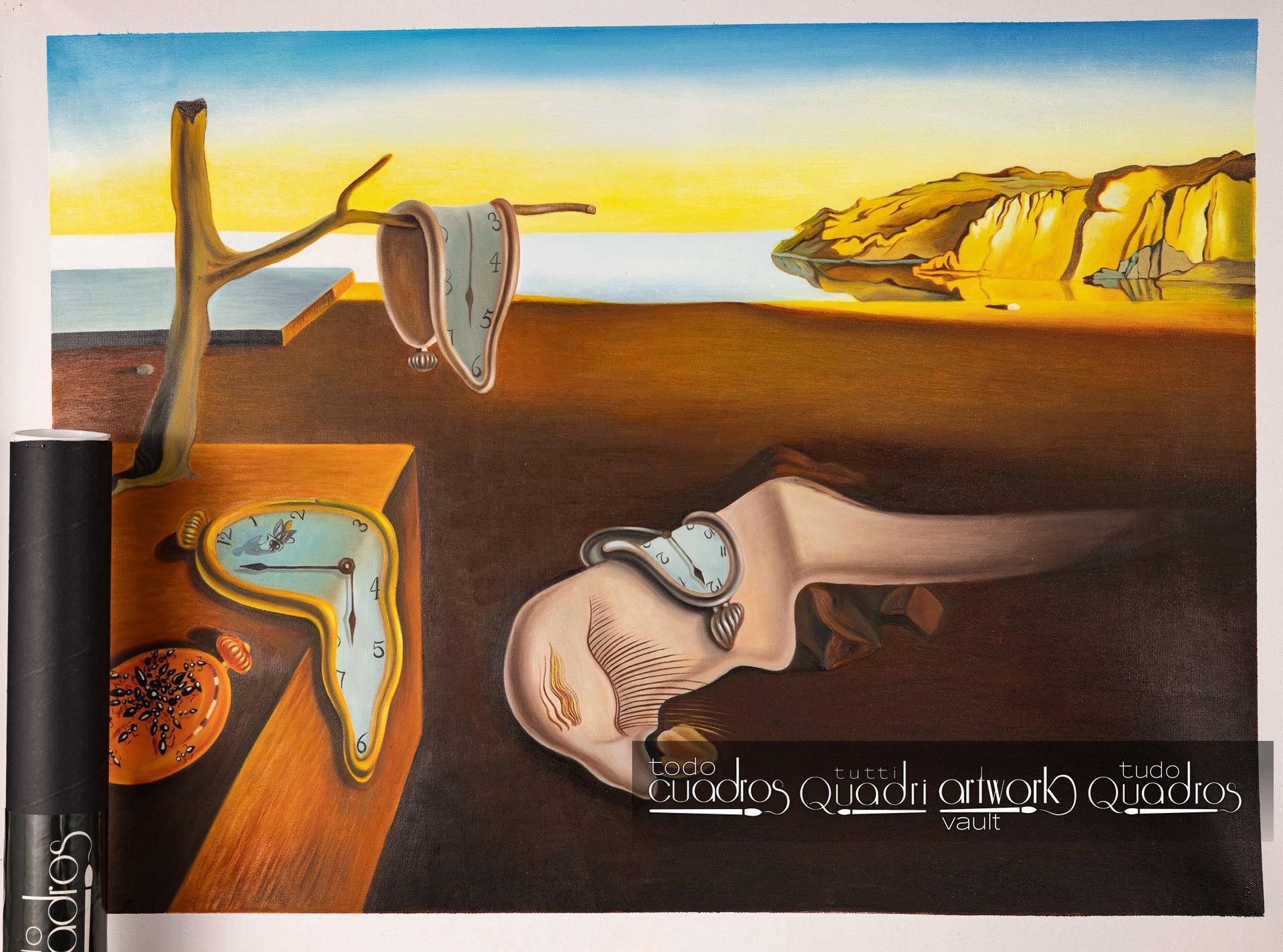




The Persistence of Memory, Dalí
- Oil on linen canvas
- 100% hand-painted
- Reproduction painting
- Available for online purchase
- See quality
- Shipping to the US
- Money-back guarantee
- Customer reviews
| Author: | Salvador Dalí |
|---|---|
| Type: | Painting |
| Style: | Surrealism |
| Medium | Oil |
| Support: | Canvas |
| Year: | 1931 |
| Located: | MoMA museum, New York. |
The scene depicts a desert landscape featuring four clocks: three of them appear melted, as if under the heat of the sun, while the fourth remains solid but is covered with ants. This juxtaposition of soft and hard elements reflects the tension between the ephemeral and the eternal, the material and the dreamlike—a constant theme in Dalí’s work.
The artist himself explained that the inspiration came from an everyday experience: he noticed a piece of melting Camembert cheese, and from that trivial image, he built one of the most powerful metaphors in modern painting. The soft clocks, therefore, were not born of deliberate symbolism, but from intuition and the free association that define surrealist thought.
The painting was first exhibited in 1932 at the Julien Levy Gallery in New York, where it immediately captured the attention of critics and the public alike. Shortly after, the Museum of Modern Art (MoMA) acquired it, making it one of the most celebrated pieces in its permanent collection and securing its place as an icon of 20th-century art.
The Persistence of Memory marked a turning point in Dalí’s career. From this work onward, the artist from Figueres consolidated his personal style and international reputation.
It is the most emblematic work of Salvador Dalí and one of the most recognized pieces of global Surrealism, also known as “The Soft Watches”. In this painting, the artist explores his interest in the passage of time, the transformation of matter, and the shifting perception of reality — subjects that would define much of his career.
Choose options





Why is this painting famous?
The work, small in size but of great symbolic power, gained immediate recognition for presenting a radically different vision of reality, in which everyday elements are distorted to reveal the unconscious. The contrast between the almost photographic precision of the landscape and the absurd plasticity of the objects turned the painting into a universal metaphor for the relativity of time and one of the most recognizable images of the 20th century.
Discover more famous paintings

